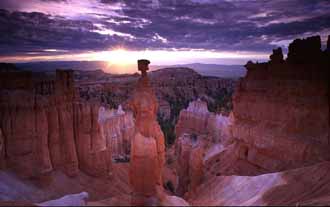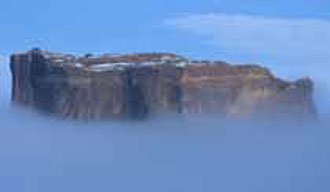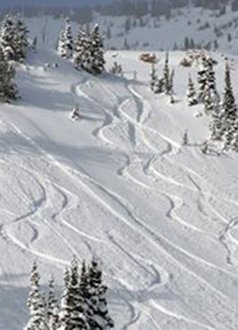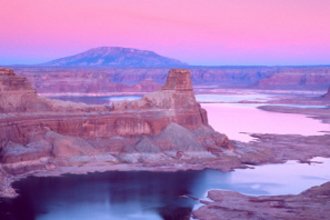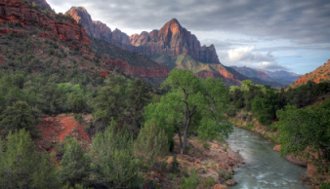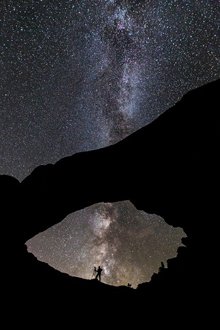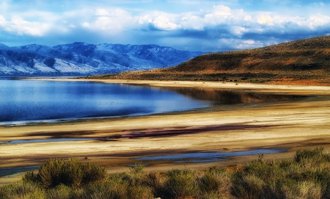That You Were Never The Same?
Utah Wolves
Do They Exist?
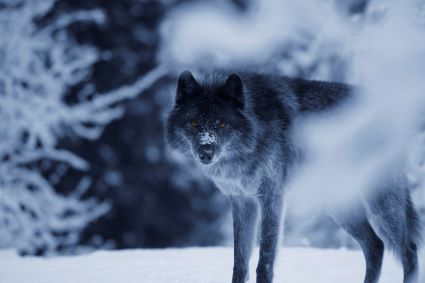
Aren't Utah Wolves Long Gone?
It wasn’t long ago ... a couple decades actually ... that Utah wolves were spoken of in the past tense. There weren’t any. In fact, the last verified wolf taken … or killed … in Utah according to the U.S. Fish and Wildlife Service, Predator and Rodent Control was in 1930 in San Juan County.
Prior to that, from 1917 thru 1930, 162 wolves were taken. 48 of them were taken in 1918 alone. But only two Utah wolves were taken after 1926. There were no wolves taken and no wolves spotted in the state for years. This purging didn’t just apply to wolves. It also pertained to wolverines.
Entire towns back in the 1800’s were expected to participate in the purging of wolves and wolverines … far less numerous … and rid the countryside of every last one of them. The last wolf in Cache County … except for the occasional straggler … was reportedly killed in 1869
But many Utahns were startled by a story in the Salt Lake Tribune on September 25, 2010. The story revealed that as many as 15 wolves had been sighted that year in the state. It seemed like that news came right “out of the blue.”
Nonetheless, it seemed that all of these wolves were reportedly running solo. There still are no established breeding packs of wolves in the state. At least yet.
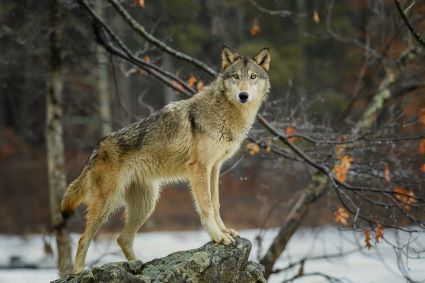
So How Many and Where Are They?
Since 2003, there have been more frequent reports of Utah wolf sightings. In 2009, there were 9 reports throughout the state. In 2010, there were 15 by September. Since wolves were reintroduced in the Northern Rockies in 1995, the DWR has been able to confirm around 20 wolves in the state.
As of 2023, the last known wolf in the state had been spotted several times on the south slope of the Uinta Mountains early in fall 2022. That animal was a 4-year-old male that had traveled from Idaho's panhandle region near the Canadian border. It hasn’t been spotted since.
Since wolves were introduced back into the northern Rockies in 1995, the Utah Department of Wildlife Resources has verified 20 wolves chilling in northern Utah. Curiously, most wolf sightings are of lone wanderers and not part of a pack. It is almost like scouts sent to check out the terrain.
Flashback to 1995 when wolves were reintroduced to Yellowstone. The science shows that the ecology of Yellowstone has completely changed for the better due to this reintroduction. Almost all of the recent positive changes occurring in Yellowstone can be traced back to that reestablishment.
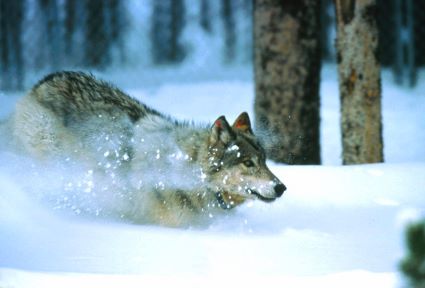
Where Are Utah Wolves Coming From?
So it is obvious where Utah wolves are coming from. The U.S. Fish and Wildlife Service ... the USFWS ... initiated a policy of reintroducing wolves into the northern range of the Rocky Mountains including Yellowstone and Idaho. Yellowstone and Idaho are just over the border from Utah.
It is apparent that even though Utah hasn’t taken part in these efforts, the wolves don’t recognize state borders. The natural migration of wolves from Canada into the northwestern Rocky Mountains of Montana over the years has resulted in several packs regaining a foothold there also.
Canadian wolves ... 31 of them ... were introduced into Yellowstone National Park in 1995 and 1996. In addition, 35 of them were introduced into central Idaho.
That was a very controversial decision. In 2002, those numbers increased to 261 in Idaho and 218 in the Yellowstone area. The Montana population was determined to be 84.
Not to long after that ... in 2002 ... a radio-collared wolf was captured in northern Utah. There were other sightings of wolves in the state as mentioned above. A recent court decision has put most of the wolves in Utah back on the endangered list under the federal Endangered Species Act.
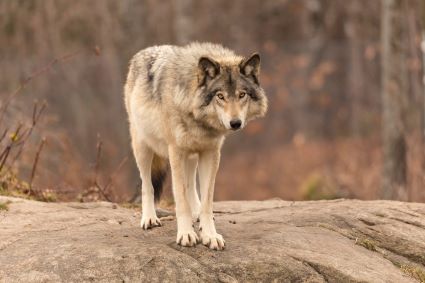
How Many Wolves Are There in Idaho & Yellowstone?
The exception is a tiny area in the northern part of the state. Utah has rolled out a plan to manage the wolves complete with a team to keep an eye on them. Any wolf stepping outside of that small zone is seen as endangered and is under super strict federal protection. Pretty wild eh?
As of 2022, there were fewer than 120 wolves in the whole of Yellowstone National Park. But in Idaho, the number has exploded. The wolf population there reached 1,543 in 2021! It declined to 1,337 in 2022.
The state of Idaho has come up with a plan to reduce their wolf population to 500 by 2028. Wolf populations are extremely hard to reduce as they produce large litters. One study showed that if 29% of a wolf population was killed in a year, the population wouldn’t decrease.
It is believed that in some cases, the wolf population in an area could be reduced by 45% and the population would still remain stable. You can understand why the state of Utah wants to keep an eye on their numbers here.
The vast majority of Utah’s small population of wolves is located in the sparsely populated extreme northern part of the state. Even so, it is apparent that people and wolves don’t mix. Neither do wolves and little pigs.
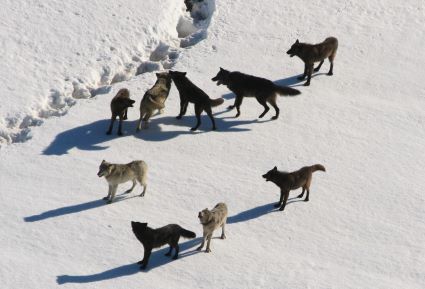
There’s an excellent article about Idaho’s issues here: How Idaho Plans to Kill 700 Wolves.
As you might expect, all of this activity is quite naturally making people excited. And some a little nervous. As these reports have increased, so have the reports of livestock predation.
When this started to be become an issue a decade or so ago, legislation was introduced by two Utah congressmen to delist the gray wolf as an endangered species.
Once again, in a confrontation between federal courts and western private landowners, a federal court decision came down against the landowners. It ruled that the U.S. Fish and Wildlife Service didn’t have the authority to remove wolves from the endangered species list on a state-by-state basis.
It had done so in Idaho and Montana allowing hunts in those states as wolf populations continued to climb. Although not all reports of Utah wolves have been substantiated, the DWR … Division of Wildlife Resources … will admit that roaming wolves have wandered into the state from Idaho and Wyoming.
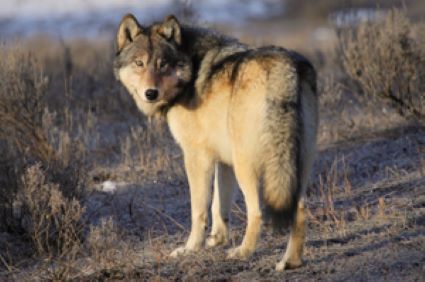
Are Utah Wolves in Packs or Are They "Lone Wolves?"
They say there is no evidence of packs or breeding. Every sighting has supposedly been solo. Most of the confirmed sightings continue to be in counties bordering Idaho and Wyoming. Wolves have even been killed after attacking Utah livestock in these areas.
The Salt Lake Tribune article reports that on July 12, 2010, in the Uinta
Mountains, someone reported seeing four wolves on the north side of
Lily Lake just off the Mirror Lake Highway. The DWR says they don’t know if they were wolves or
coyotes.
Then, not long after that, a University of Utah environmental studies graduate was camping at Washington Lake just west of the aforementioned Lily Lake. He claimed to have experience around coyotes and wild dogs. And he has heard wolves in the wild.
He heard howling and shorter yelps which he is convinced was being made by a group of wolves. He and his companion made enough noise that the “wolves” became quiet and moved away. State biologists, for some reason, didn’t follow up on these reports.
On a personal note, it wasn’t too long after that article was written that my family and I spent the afternoon and evening at this same Washington Lake. Fishing and hanging out at a campsite. These reports became public several weeks later so we weren’t aware of these “sightings”.
Two things are apparent from all of this. Wolves are moving into Utah even if they are “lone wolfs.” And state biologists have seemingly been slow in investigating the growing population of Utah wolves until recently. Or maybe they’re just not talking much about it.
Have A Great Story or Comment
About Utah Wolves?
Do you have a story or comment about this topic? Share it!



